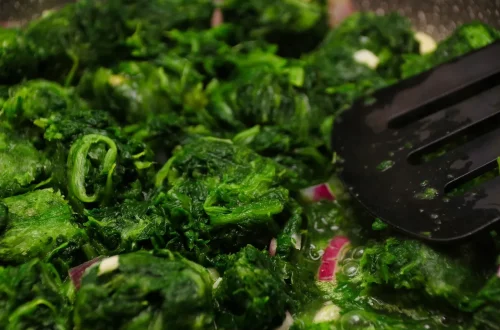
The Surprising Benefits of Cat Braces for Your Feline Friend
Cats have long been cherished as companions, offering affection and entertainment to their owners. However, just like humans, our feline friends can face dental issues that may require intervention. As pet care evolves, innovative solutions emerge, and one of the more surprising options is the use of braces for cats. While many might find the concept of cat braces peculiar, they serve a significant purpose in maintaining oral health, enhancing comfort, and improving the overall quality of life for our pets.
When we think of braces, images of teenagers with metal brackets often come to mind. However, the reality is that cats, too, can benefit from orthodontic interventions. Over time, the understanding of animal dental health has expanded, leading to new treatments that can alleviate pain and prevent future problems. The idea of braces for cats may raise eyebrows, but as more pet owners become aware of the advantages, this unconventional approach is gaining acceptance.
Whether it’s addressing misalignment, overcrowding, or other dental abnormalities, braces can offer a range of benefits that contribute to a cat’s well-being. In this article, we’ll explore the surprising advantages of cat braces and how they can transform the lives of our beloved pets.
Understanding Feline Dental Health
Understanding the dental health of cats is crucial for any pet owner. Just like humans, cats have a set of teeth that play an essential role in their overall health. Their teeth are not only vital for eating but also for grooming and social interactions. Unfortunately, dental issues are common among felines, often going unnoticed until they lead to more severe complications.
One of the primary concerns is periodontal disease, which affects the gums and can result in tooth loss if left untreated. Cats can also suffer from misaligned teeth, which can create discomfort and make eating challenging. Misalignment may occur for various reasons, including genetics, trauma, or dental neglect. When a cat has a misaligned bite, it can lead to uneven wear on the teeth, causing pain and potential health issues.
Regular dental check-ups are essential in identifying these problems early. A veterinarian can evaluate your cat’s oral health and recommend appropriate treatments, which may include braces in certain situations. Though the idea of braces may seem unusual, they can be a vital solution for cats suffering from dental alignment issues.
Investing in your cat’s dental health is not just about maintaining a bright smile; it’s about ensuring a comfortable and healthy life. By understanding the importance of dental care and the potential need for braces, pet owners can take proactive steps to enhance their cats’ well-being.
The Role of Braces in Feline Orthodontics
The role of braces in feline orthodontics is more significant than many pet owners realize. Just as braces work for humans to correct misaligned teeth, they can also provide similar benefits for cats. The use of braces in veterinary dentistry is a specialized practice, often requiring a trained veterinary dentist to evaluate and determine the best course of action.
Braces for cats are typically made from materials that are safe and comfortable for pets. They can help reposition teeth that are crooked, crowded, or otherwise misaligned. By gradually applying pressure, these braces encourage the teeth to shift into their proper positions over time.
The decision to use braces is not taken lightly. A thorough examination of the cat’s dental structure is necessary to ensure that braces are the appropriate solution. Factors such as the cat’s age, the severity of the misalignment, and overall health are taken into account. In some cases, braces may be recommended after other dental procedures, such as extractions, to ensure that the remaining teeth align correctly.
The process of fitting braces on a cat involves several steps, including taking impressions and possibly creating custom appliances. While the thought of a cat wearing braces may seem unconventional, the benefits can be substantial. Improved alignment can lead to better chewing function, reduced pain, and a lower likelihood of future dental problems.
As with any medical procedure, pet owners should consult with a qualified veterinarian to understand the potential risks and benefits involved. It’s essential to weigh the options and make informed decisions for your feline friend’s health.
Enhanced Comfort and Quality of Life
One of the most significant advantages of braces for cats is the enhanced comfort they can provide. Misaligned teeth can cause discomfort and pain, which may lead to behavioral changes in your cat. A cat suffering from dental pain may become irritable, lose interest in food, or avoid social interactions. By correcting these dental issues with braces, pet owners can significantly improve their cat’s quality of life.
When teeth are properly aligned, cats can chew their food more effectively. This not only makes eating more enjoyable but also aids in digestion, as well-aligned teeth help break down food properly. Additionally, when a cat is free from dental pain, they are more likely to engage in playful behavior and maintain a happy demeanor.
Moreover, addressing dental issues early can prevent more severe complications down the line, such as infections or systemic health problems. Dental health is closely linked to overall health, and maintaining proper alignment can contribute to a longer, healthier life for your cat.
It’s important to note that the adjustment period for cats wearing braces may require patience. Initially, your cat may need time to adapt to the feeling of having braces. However, with time and care, many cats adjust well and can enjoy the benefits of improved dental health.
As a pet owner, observing your cat’s behavior and ensuring their comfort during this transition is crucial. Regular follow-ups with a veterinarian can help monitor progress and make any necessary adjustments, ultimately leading to a happier, healthier feline friend.
Potential Challenges and Considerations
While the benefits of cat braces are notable, there are also potential challenges and considerations to keep in mind. Like any medical procedure, the use of braces comes with its own set of complexities that pet owners should be aware of.
One of the primary challenges is the initial adjustment period. Cats may experience discomfort as they adapt to the braces, which can lead to temporary behavioral changes. Monitoring your pet closely during this time is essential to ensure they are coping well with the new appliance.
Another consideration is the cost associated with braces. Veterinary orthodontics can be a specialized and sometimes expensive field. Pet owners should be prepared for the financial investment, which may include not only the initial fitting of braces but also follow-up visits and adjustments. It’s important to discuss all potential costs with your veterinarian before proceeding with treatment.
Additionally, not all cats are suitable candidates for braces. Factors such as age, dental health, and the extent of misalignment can all influence whether braces are a viable option. A thorough assessment by a veterinary dentist will help determine the best course of action for your pet.
Finally, there may be a need for ongoing home care, including regular dental cleanings and monitoring of the braces. This commitment is crucial for the success of the orthodontic treatment and ensuring your cat’s long-term dental health.
In conclusion, while cat braces may seem like an unconventional solution, they offer significant benefits for many feline companions. As with any medical decision, it is essential to consult with a veterinarian to explore the best options for your pet’s unique needs.
**Disclaimer:** This article is for informational purposes only and should not be considered medical advice. Always consult a veterinarian for health-related concerns regarding your pet.




